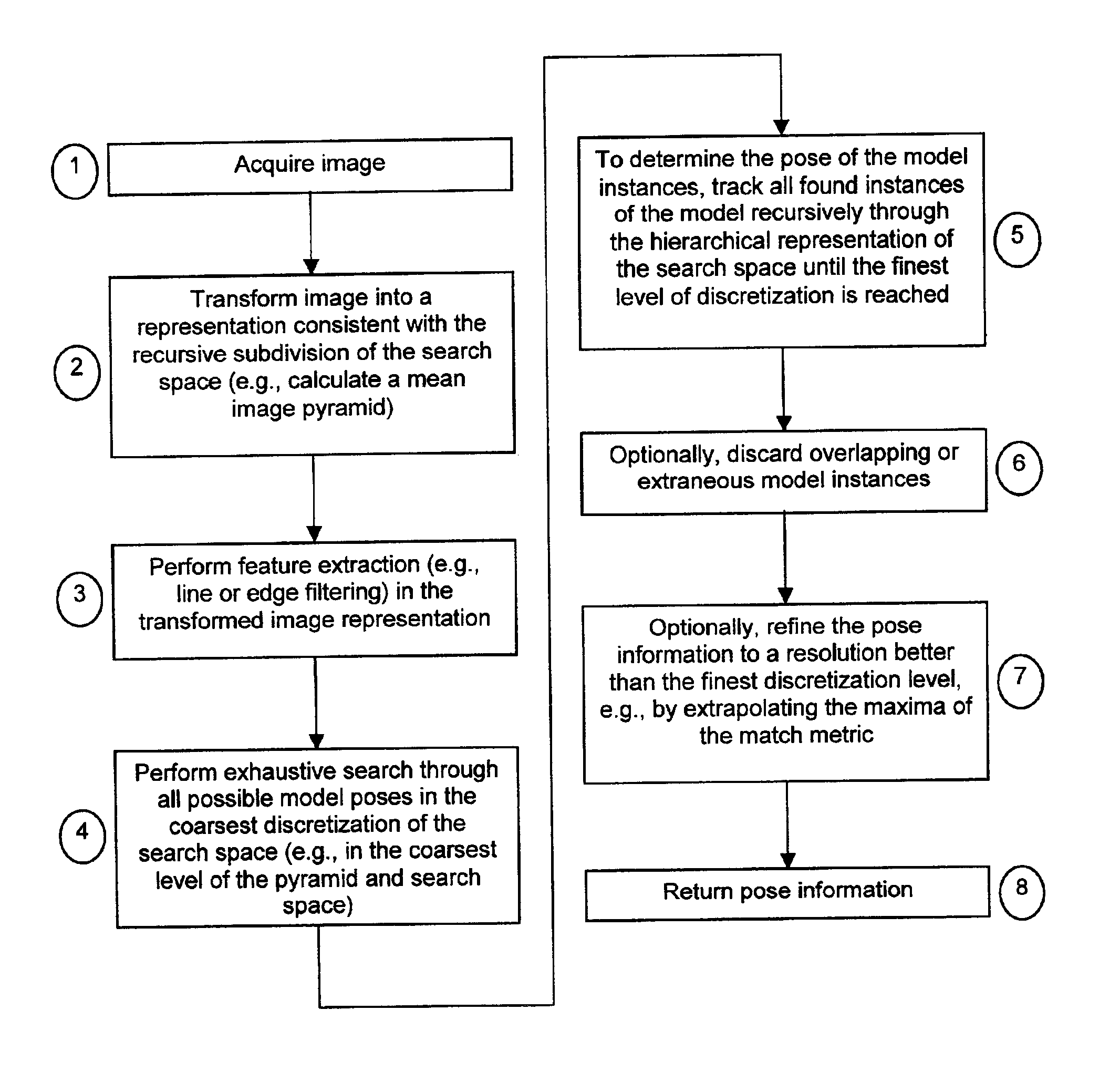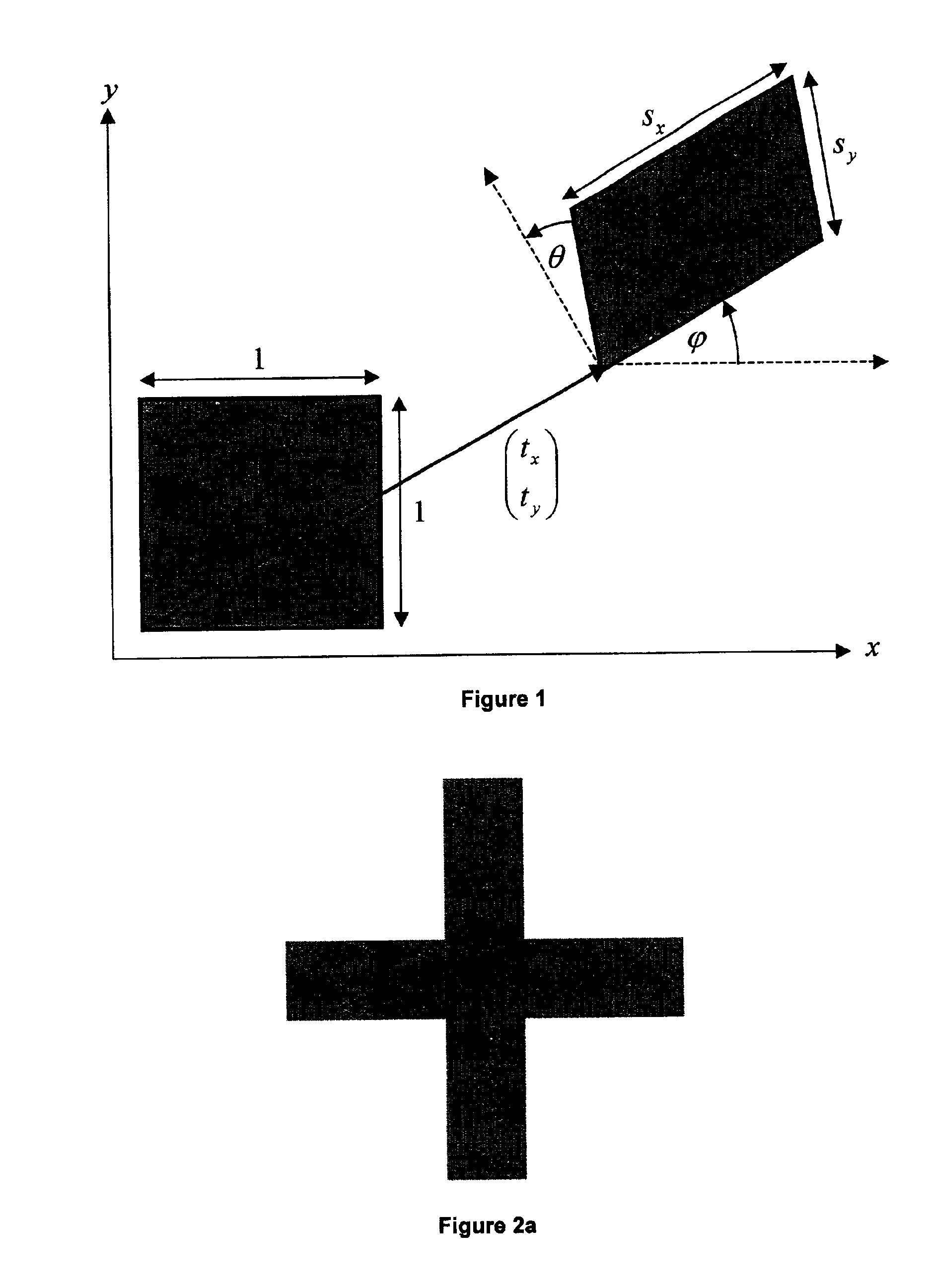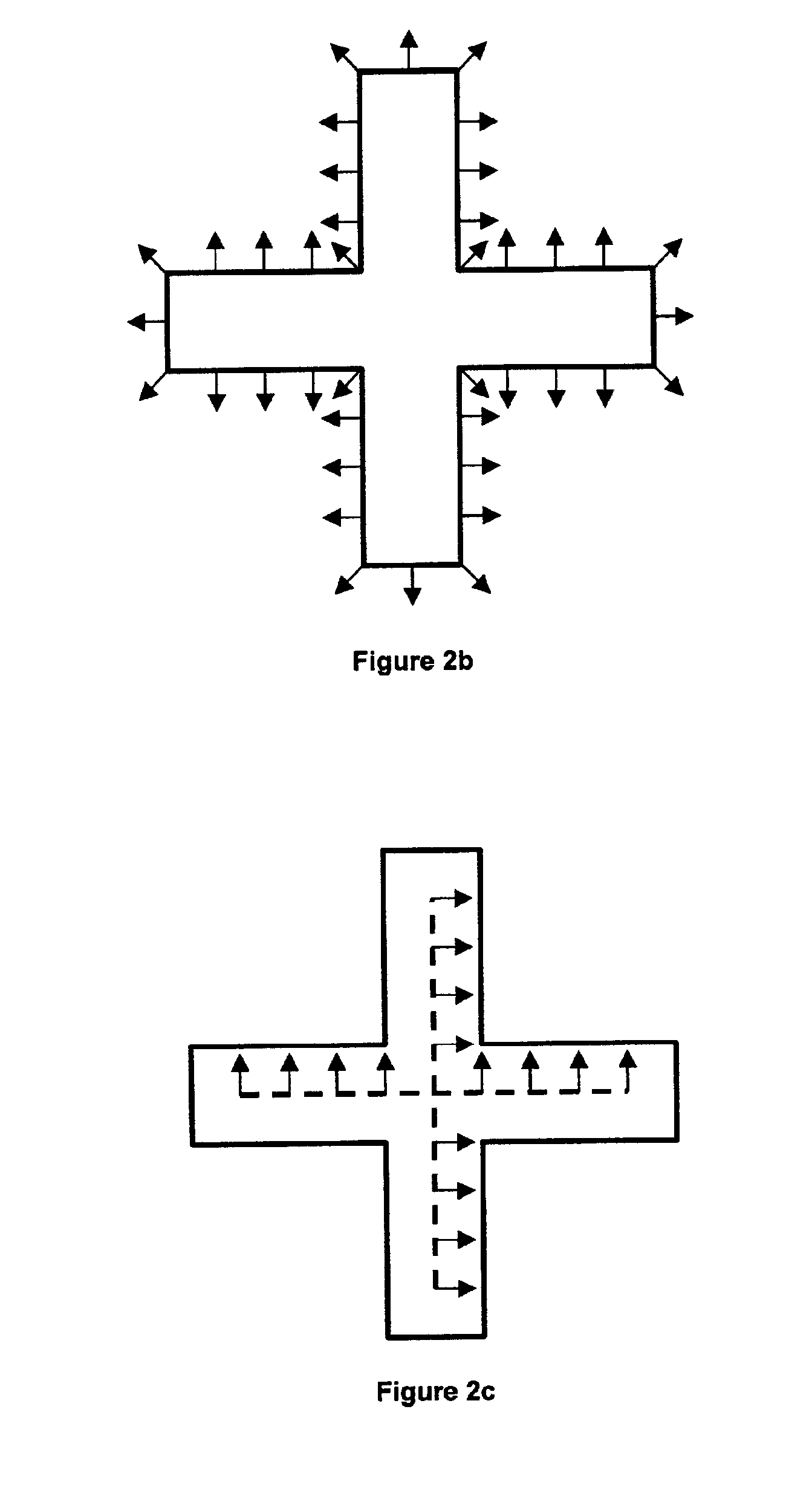System and method for object recognition
a technology of object recognition and system, applied in the field of machine vision systems, can solve the problems of inability to find models, high cost of computation, and inability to detect models if images exhibit non-linear contrast changes, and achieve the effect of speeding up the object recognition process
- Summary
- Abstract
- Description
- Claims
- Application Information
AI Technical Summary
Benefits of technology
Problems solved by technology
Method used
Image
Examples
Embodiment Construction
[0051]The present invention provides a method for object recognition that is robust to occlusion, clutter, and non-linear contrast changes.
[0052]The present invention also provides an object recognition system shown in FIG. 7 for use with a computer as shown in FIG. 8 to implement the methods described herein in conjunction with FIGS. 1-6.
[0053]The system for recognizing a model object in a first image shown in FIG. 7 includes:[0054](a) means for acquiring in electronic memory a first image of the model object;[0055](b) means for transforming the first image of the model object into a multi-level representation consistent with a recursive subdivision of a search space, the multi-level representation including at least the first image;[0056](c) means for generating at least one precomputed model of the model object for each level of discretization of the search space, the precomputed model consisting of a plurality of model points with corresponding direction vectors, the model point...
PUM
 Login to View More
Login to View More Abstract
Description
Claims
Application Information
 Login to View More
Login to View More - R&D
- Intellectual Property
- Life Sciences
- Materials
- Tech Scout
- Unparalleled Data Quality
- Higher Quality Content
- 60% Fewer Hallucinations
Browse by: Latest US Patents, China's latest patents, Technical Efficacy Thesaurus, Application Domain, Technology Topic, Popular Technical Reports.
© 2025 PatSnap. All rights reserved.Legal|Privacy policy|Modern Slavery Act Transparency Statement|Sitemap|About US| Contact US: help@patsnap.com



